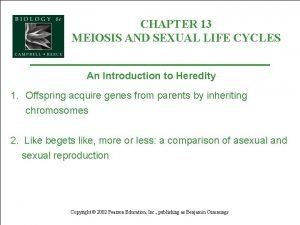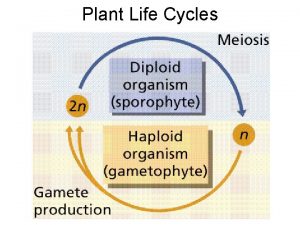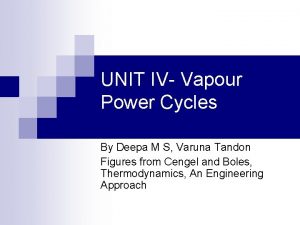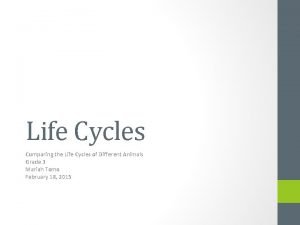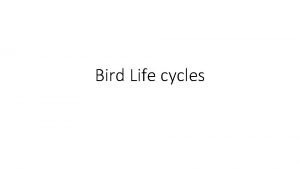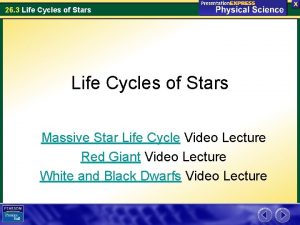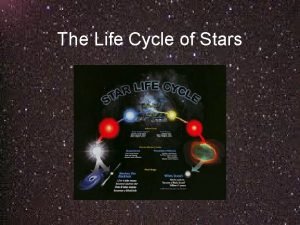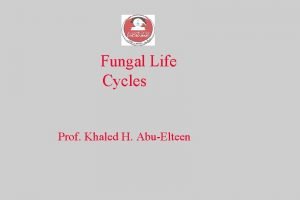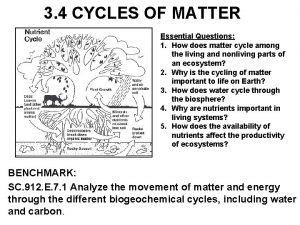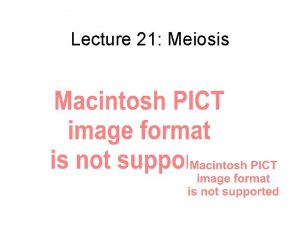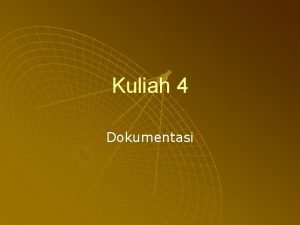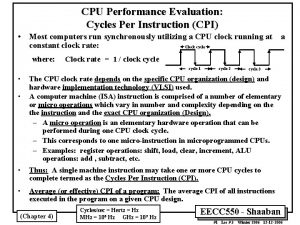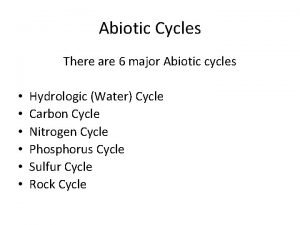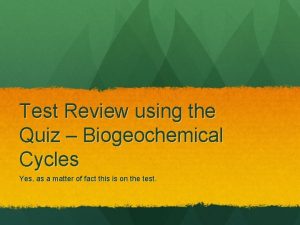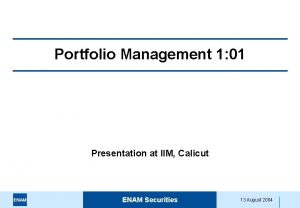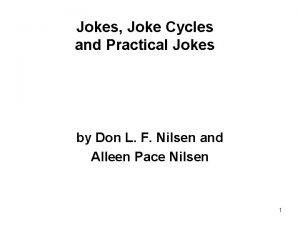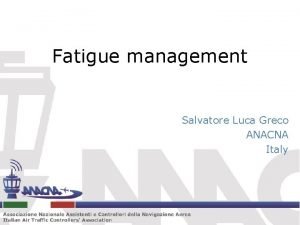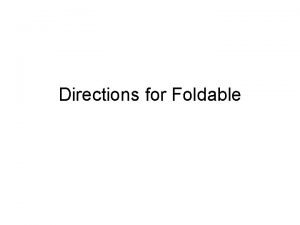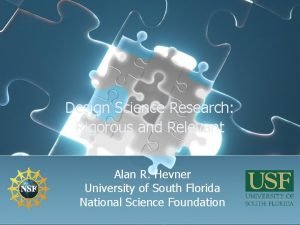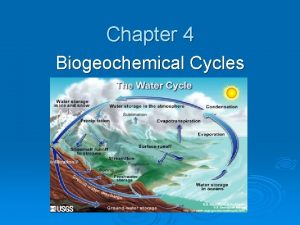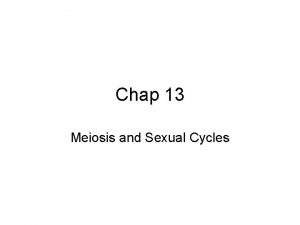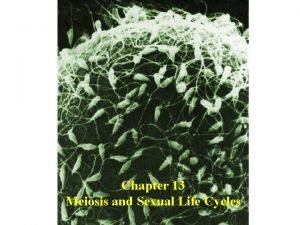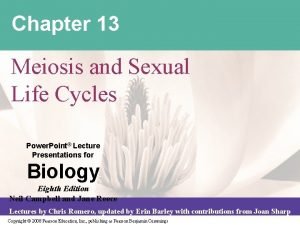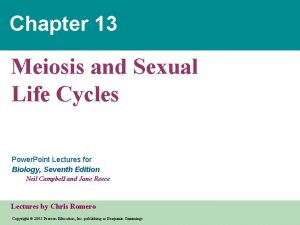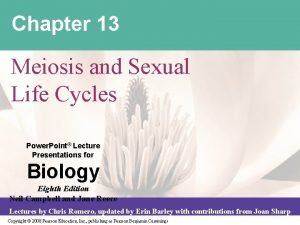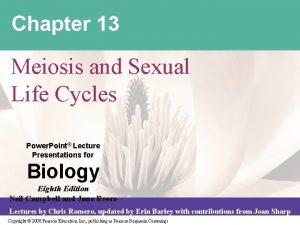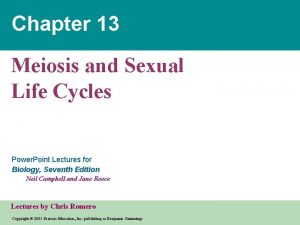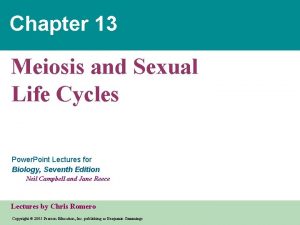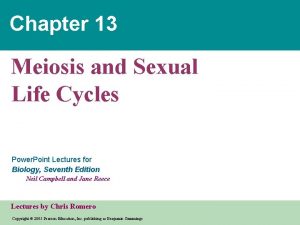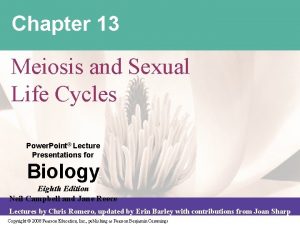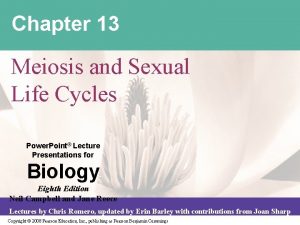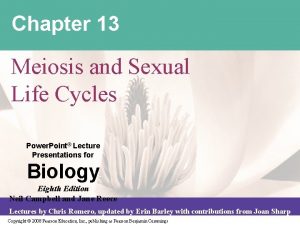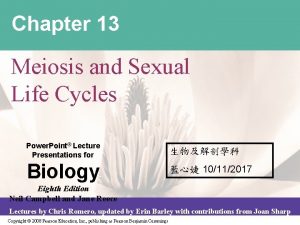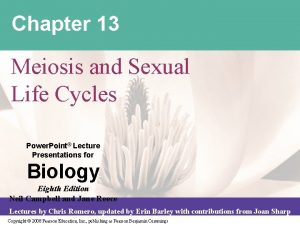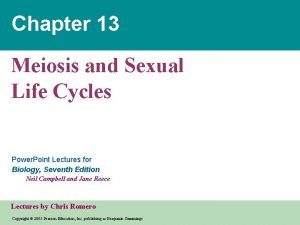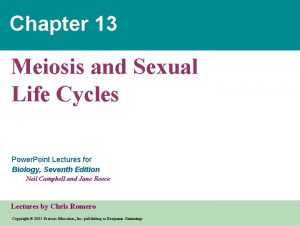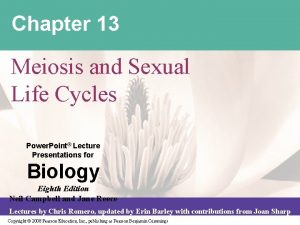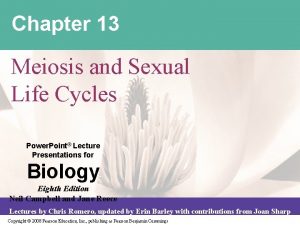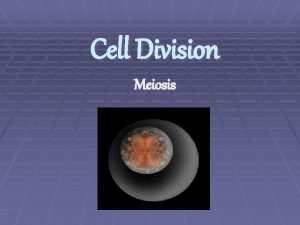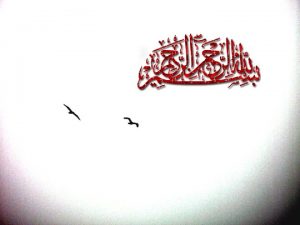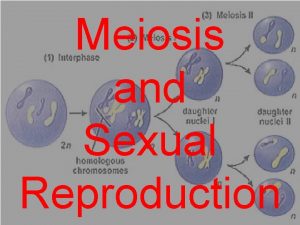Chapter 13 Meiosis and Sexual Life Cycles Power














































- Slides: 46

Chapter 13 Meiosis and Sexual Life Cycles Power. Point® Lecture Presentations for 生物及解剖學科 Biology 藍心婕 10/11/2017 Eighth Edition Neil Campbell and Jane Reece Lectures by Chris Romero, updated by Erin Barley with contributions from Joan Sharp Copyright © 2008 Pearson Education, Inc. , publishing as Pearson Benjamin Cummings

Concept 13. 1: Offspring acquire genes from parents by inheriting chromosomes • In a literal sense, children do not inherit particular physical traits from their parents • It is genes that are actually inherited Copyright © 2008 Pearson Education Inc. , publishing as Pearson Benjamin Cummings

Inheritance of Genes • Genes are the units of heredity, and are made up of segments of DNA • Genes are passed to the next generation through reproductive cells called gametes (sperm and eggs) • Each gene has a specific location called a locus on a certain chromosome • Most DNA is packaged into chromosomes • One set of chromosomes is inherited from each parent Copyright © 2008 Pearson Education Inc. , publishing as Pearson Benjamin Cummings

Comparison of Asexual and Sexual Reproduction • In asexual reproduction, one parent produces genetically identical offspring by mitosis • A clone is a group of genetically identical individuals from the same parent • In sexual reproduction, two parents give rise to offspring that have unique combinations of genes inherited from the two parents Copyright © 2008 Pearson Education Inc. , publishing as Pearson Benjamin Cummings

Fig. 13 -2 0. 5 mm Parent Bud (a) Hydra (b) Redwoods

– In sexual reproduction • Fertilization of sperm and egg produces offspring (gene recombination) – In asexual reproduction • Offspring are produced by a single parent, without the participation of sperm and egg

Concept 13. 2: Fertilization and meiosis alternate in sexual life cycles • A life cycle is the generation-to-generation sequence of stages in the reproductive history of an organism Copyright © 2008 Pearson Education Inc. , publishing as Pearson Benjamin Cummings

Sets of Chromosomes in Human Cells • Human somatic cells (any cell other than a gamete) have 23 pairs of chromosomes • A karyotype is an ordered display of the pairs of chromosomes from a cell • The two chromosomes in each pair are called homologous chromosomes, or homologs • Chromosomes in a homologous pair are the same length and carry genes controlling the same inherited characters Copyright © 2008 Pearson Education Inc. , publishing as Pearson Benjamin Cummings

Preparation of a karyotype from a blood sample Hypotonic solution Packed red and white blood cells Fixative Stain Blood culture White blood cells Centrifuge Fluid 1 A blood culture is centrifuged to separate the blood cells from the culture fluid. 2 The fluid is discarded, and a hypotonic solution is mixed with the cells. This makes the red blood cells burst. The white blood cells swell but do not burst, and their chromosomes spread out. 3 Another centrifugation step separates the swollen white blood cells. The fluid containing the remnants of the red blood cells is poured off. A fixative (preservative) is mixed with the white blood cells. A drop of the cell suspension is spread on a microscope slide, dried, and stained. Centromere Sister chromosomes 2, 600 X Pair of homologous chromosomes Copyright © 2005 Pearson Education, Inc. Publishing as Benjamin Cummings

• The sex chromosomes are called X and Y • Human females have a homologous pair of X chromosomes (XX) • Human males have one X and one Y chromosome • The 22 pairs of chromosomes that do not determine sex are called autosomes Copyright © 2008 Pearson Education Inc. , publishing as Pearson Benjamin Cummings

Gametes have a single set of chromosomes • Cells with two sets of chromosomes – Are said to be diploid • Gametes, eggs and sperm, are haploid – With a single set of chromosomes Copyright © 2005 Pearson Education, Inc. Publishing as Benjamin Cummings

Fig. 13 -4 Key 2 n = 6 Maternal set of chromosomes (n = 3) Paternal set of chromosomes (n = 3) Two sister chromatids of one replicated chromosome Two nonsister chromatids in a homologous pair Centromere Pair of homologous chromosomes (one from each set)

• A gamete (sperm or egg) contains a single set of chromosomes, and is haploid (n) • For humans, the haploid number is 23 (n = 23) • Each set of 23 consists of 22 autosomes and a single sex chromosome • In an unfertilized egg (ovum), the sex chromosome is X • In a sperm cell, the sex chromosome may be either X or Y Copyright © 2008 Pearson Education Inc. , publishing as Pearson Benjamin Cummings

Behavior of Chromosome Sets in the Human Life Cycle • Fertilization is the union of gametes (the sperm and the egg) • The fertilized egg is called a zygote and has one set of chromosomes from each parent • The zygote produces somatic cells by mitosis and develops into an adult Copyright © 2008 Pearson Education Inc. , publishing as Pearson Benjamin Cummings

Fig. 13 -5 Key Haploid gametes (n = 23) Haploid (n) Egg (n) Diploid (2 n) Sperm (n) MEIOSIS Ovary FERTILIZATION Testis Diploid zygote (2 n = 46) Mitosis and development Multicellular diploid adults (2 n = 46)

The Variety of Sexual Life Cycles • The alternation of meiosis and fertilization is common to all organisms that reproduce sexually • The three main types of sexual life cycles differ in the timing of meiosis and fertilization Copyright © 2008 Pearson Education Inc. , publishing as Pearson Benjamin Cummings

Fig. 13 -6 a Key Haploid (n) Diploid (2 n) n Gametes n n MEIOSIS 2 n Diploid multicellular organism (a) Animals FERTILIZATION Zygote 2 n Mitosis

• Plants and some algae exhibit an alternation of generations • This life cycle includes both a diploid and haploid multicellular stage • The diploid organism, called the sporophyte, makes haploid spores by meiosis Copyright © 2008 Pearson Education Inc. , publishing as Pearson Benjamin Cummings

• Each spore grows by mitosis into a haploid organism called a gametophyte • A gametophyte makes haploid gametes by mitosis • Fertilization of gametes results in a diploid sporophyte Copyright © 2008 Pearson Education Inc. , publishing as Pearson Benjamin Cummings

Fig. 13 -6 b Key Haploid (n) Diploid (2 n) Mitosis n Haploid multicellular organism (gametophyte) Mitosis n n Spores MEIOSIS Gametes FERTILIZATION 2 n Diploid multicellular organism (sporophyte) 2 n Mitosis (b) Plants and some algae Zygote

• In most fungi and some protists, the only diploid stage is the single-celled zygote; there is no multicellular diploid stage • The zygote produces haploid cells by meiosis • Each haploid cell grows by mitosis into a haploid multicellular organism • The haploid adult produces gametes by mitosis Copyright © 2008 Pearson Education Inc. , publishing as Pearson Benjamin Cummings

Fig. 13 -6 c Key Haploid (n) Haploid unicellular or multicellular organism Diploid (2 n) Mitosis n n Gametes MEIOSIS n FERTILIZATION 2 n Zygote (c) Most fungi and some protists

Concept 13. 3: Meiosis reduces the number of chromosome sets from diploid to haploid • Like mitosis, meiosis is preceded by the replication of chromosomes • Meiosis takes place in two sets of cell divisions, called meiosis I and meiosis II • The two cell divisions result in four daughter cells, rather than the two daughter cells in mitosis • Each daughter cell has only half as many chromosomes as the parent cell Copyright © 2008 Pearson Education Inc. , publishing as Pearson Benjamin Cummings

Fig. 13 -7 -3 Interphase Homologous pair of chromosomes in diploid parent cell Chromosomes replicate Homologous pair of replicated chromosomes Sister chromatids Diploid cell with replicated chromosomes Meiosis I 1 Homologous chromosomes separate Haploid cells with replicated chromosomes Meiosis II 2 Sister chromatids separate Haploid cells with unreplicated chromosomes

• Division in meiosis I occurs in four phases: – Prophase I – Metaphase I – Anaphase I – Telophase I and cytokinesis Copyright © 2008 Pearson Education Inc. , publishing as Pearson Benjamin Cummings

Fig. 13 -8 Metaphase I Prophase I Centrosome (with centriole pair) Sister chromatids Chiasmata Spindle Centromere (with kinetochore) Prophase II Metaphase II Anaphase II Telophase II and Cytokinesis Sister chromatids remain attached Metaphase plate Homologous chromosomes separate Homologous chromosomes Fragments of nuclear envelope Telophase I and Cytokinesis Anaphase I Microtubule attached to kinetochore Cleavage furrow Sister chromatids separate Haploid daughter cells forming

• Division in meiosis II also occurs in four phases: – Prophase II – Metaphase II – Anaphase II – Telophase II and cytokinesis • Meiosis II is very similar to mitosis Copyright © 2008 Pearson Education Inc. , publishing as Pearson Benjamin Cummings

Fig. 13 -8 d Prophase II Metaphase II Anaphase II Telophase II and Cytokinesis Sister chromatids separate Haploid daughter cells forming

A Comparison of Mitosis and Meiosis • Mitosis conserves the number of chromosome sets, producing cells that are genetically identical to the parent cell • Meiosis reduces the number of chromosomes sets from two (diploid) to one (haploid), producing cells that differ genetically from each other and from the parent cell • The mechanism for separating sister chromatids is virtually identical in meiosis II and mitosis Copyright © 2008 Pearson Education Inc. , publishing as Pearson Benjamin Cummings

Fig. 13 -9 a MITOSIS MEIOSIS Parent cell Chromosome replication Prophase Chiasma Chromosome replication Prophase I Homologous chromosome pair 2 n = 6 Replicated chromosome MEIOSIS I Metaphase I Anaphase Telophase Anaphase I Telophase I Haploid n=3 Daughter cells of meiosis I 2 n Daughter cells of mitosis 2 n MEIOSIS II n n Daughter cells of meiosis II

Fig. 13 -9 b SUMMARY Property Mitosis Meiosis DNA replication Occurs during interphase before mitosis begins Occurs during interphase before meiosis I begins Number of divisions One, including prophase, metaphase, and telophase Two, each including prophase, metaphase, and telophase Synapsis of homologous chromosomes Does not occur Occurs during prophase I along with crossing over between nonsister chromatids; resulting chiasmata hold pairs together due to sister chromatid cohesion Number of daughter cells and genetic composition Two, each diploid (2 n) and genetically identical to the parent cell Four, each haploid (n), containing half as many chromosomes as the parent cell; genetically different from the parent cell and from each other Role in the animal body Enables multicellular adult to arise from zygote; produces cells for growth, repair, and, in some species, asexual reproduction Produces gametes; reduces number of chromosomes by half and introduces genetic variability among the gametes

• Three events are unique to meiosis, and all three occur in meiosis l: – Synapsis and crossing over in prophase I: Homologous chromosomes physically connect and exchange genetic information – At the metaphase plate, there are paired homologous chromosomes (tetrads), instead of individual replicated chromosomes – At anaphase I, it is homologous chromosomes, instead of sister chromatids, that separate Copyright © 2008 Pearson Education Inc. , publishing as Pearson Benjamin Cummings

Concept 13. 4: Genetic variation produced in sexual life cycles contributes to evolution • Mutations (changes in an organism’s DNA) are the original source of genetic diversity • Mutations create different versions of genes called alleles • Reshuffling of alleles during sexual reproduction produces genetic variation Copyright © 2008 Pearson Education Inc. , publishing as Pearson Benjamin Cummings

Homologous chromosomes carry different versions of genes • The differences between homologous chromosomes – Are based on the fact that they can bear different versions of a gene at corresponding loci Brown coat (C); black eyes (E) Coat-color genes Eye-color genes Brown Black C E C E c e Meiosis c White e Pink Tetrad in parent cell (homologous pair of duplicated chromosomes) Chromosomes of the four gametes Figure 8. 17 B Copyright © 2005 Pearson Education, Inc. Publishing as Benjamin Cummings White coat (C); pink eyes (e)

Origins of Genetic Variation Among Offspring • The behavior of chromosomes during meiosis and fertilization is responsible for most of the variation that arises in each generation • Three mechanisms contribute to genetic variation: – Independent assortment of chromosomes – Crossing over – Random fertilization Copyright © 2008 Pearson Education Inc. , publishing as Pearson Benjamin Cummings

Independent Assortment of Chromosomes • Homologous pairs of chromosomes orient randomly at metaphase I of meiosis • In independent assortment, each pair of chromosomes sorts maternal and paternal homologues into daughter cells independently of the other pairs • The number of combinations possible when chromosomes assort independently into gametes is 2 n, where n is the haploid number • For humans (n = 23), there are more than 8 million (223) possible combinations of chromosomes Copyright © 2008 Pearson Education Inc. , publishing as Pearson Benjamin Cummings

Fig. 13 -11 -3 Possibility 2 Possibility 1 Two equally probable arrangements of chromosomes at metaphase I Metaphase II Daughter cells Combination 1 Combination 2 Combination 3 Combination 4

Crossing Over • Crossing over produces recombinant chromosomes, which combine genes inherited from each parent • Crossing over begins very early in prophase I, as homologous chromosomes pair up gene by gene • In crossing over, homologous portions of two nonsister chromatids trade places • Crossing over contributes to genetic variation by combining DNA from two parents into a single chromosome Copyright © 2008 Pearson Education Inc. , publishing as Pearson Benjamin Cummings

Fig. 13 -12 -5 Prophase I of meiosis Pair of homologs Nonsister chromatids held together during synapsis Chiasma Centromere TEM Anaphase II Daughter cells Recombinant chromosomes

Random Fertilization • Random fertilization adds to genetic variation because any sperm can fuse with any ovum (unfertilized egg) • The fusion of two gametes (each with 8. 4 million possible chromosome combinations from independent assortment) produces a zygote with any of about 70 trillion diploid combinations • Crossing over adds even more variation • Each zygote has a unique genetic identity Copyright © 2008 Pearson Education Inc. , publishing as Pearson Benjamin Cummings

The Evolutionary Significance of Genetic Variation Within Populations • Natural selection results in the accumulation of genetic variations favored by the environment • Sexual reproduction contributes to the genetic variation in a population, which originates from mutations Copyright © 2008 Pearson Education Inc. , publishing as Pearson Benjamin Cummings

Nondisjunction in meiosis I Normal meiosis II Nondisjunction in meiosis II Gametes n+1 n+1 n 1 Number of chromosomes Figure 8. 21 A Copyright © 2005 Pearson Education, Inc. Publishing as Benjamin Cummings n 1 n Number of chromosomes Figure 8. 21 B n

• Down syndrome is caused by trisomy 21 5, 000 – An extra copy of chromosome 21 Figure 8. 20 A Copyright © 2005 Pearson Education, Inc. Publishing as Benjamin Cummings Figure 8. 20 B

• The chance of having a Down syndrome child – Goes up with maternal age Infants with Down syndrome (per 1, 000 births) 90 80 70 60 50 40 30 20 10 0 20 25 Figure 8. 20 C Copyright © 2005 Pearson Education, Inc. Publishing as Benjamin Cummings 30 35 40 Age of mother 45 50

EVOLUTION CONNECTION New species can arise from errors in cell division Polyploid organism

Fig. 13 -UN 4
 Chapter 13: meiosis and sexual life cycles
Chapter 13: meiosis and sexual life cycles Chapter 13 meiosis and sexual life cycles
Chapter 13 meiosis and sexual life cycles Crossing over occurs during
Crossing over occurs during Section quick check chapter 10 section 1 meiosis answer key
Section quick check chapter 10 section 1 meiosis answer key Chapter 10 section 1: meiosis
Chapter 10 section 1: meiosis Sexual reproduction and genetics section 1 meiosis
Sexual reproduction and genetics section 1 meiosis Chapter 10 section 3 gene linkage and polyploidy
Chapter 10 section 3 gene linkage and polyploidy Differences between mitosis and meiosis
Differences between mitosis and meiosis Fadlife
Fadlife Plant life cycles and alternation of generations
Plant life cycles and alternation of generations Vapour power cycles
Vapour power cycles Anaphase in meiosis vs mitosis
Anaphase in meiosis vs mitosis Meiosis 1 and 2
Meiosis 1 and 2 Picture of prophase 2
Picture of prophase 2 Alliteration words for cycle
Alliteration words for cycle Rvguev
Rvguev Life cycles of a bird
Life cycles of a bird Section 26.3 life cycles of stars
Section 26.3 life cycles of stars What is charted on an hr diagram?
What is charted on an hr diagram? General fungal life cycle
General fungal life cycle Cycling of matter in an ecosystem
Cycling of matter in an ecosystem Power trianlge
Power trianlge Compare and contrast carbon and nitrogen cycles
Compare and contrast carbon and nitrogen cycles Chapter 10 sexual reproduction and genetics
Chapter 10 sexual reproduction and genetics Chapter 10 sexual reproduction and genetics
Chapter 10 sexual reproduction and genetics Ehlers trading
Ehlers trading Interphase of meiosis
Interphase of meiosis Chapter 20 sexual reproduction in animals
Chapter 20 sexual reproduction in animals Mandarin cycles
Mandarin cycles Biogeochemical cycles of water
Biogeochemical cycles of water Model for improvement
Model for improvement Precession milankovitch cycles
Precession milankovitch cycles Relationship between transaction cycles
Relationship between transaction cycles Cpi cycles per instruction
Cpi cycles per instruction Biogeochemical cycles water cycle
Biogeochemical cycles water cycle Biogeochemical cycles apes
Biogeochemical cycles apes What is the major abiotic reservoir for phosphorus
What is the major abiotic reservoir for phosphorus What happens to phosphorus that erodes from rock and soil?
What happens to phosphorus that erodes from rock and soil? Cycles in nature
Cycles in nature Joke cycles
Joke cycles Joke cycles
Joke cycles Biogeochemical cycles class 9 ppt
Biogeochemical cycles class 9 ppt Fatigue risk assessment matrix
Fatigue risk assessment matrix Cell cycle foldable project
Cell cycle foldable project Design science research cycles
Design science research cycles Biogeochemical cycles poster project examples
Biogeochemical cycles poster project examples Tujuan pdsa
Tujuan pdsa

